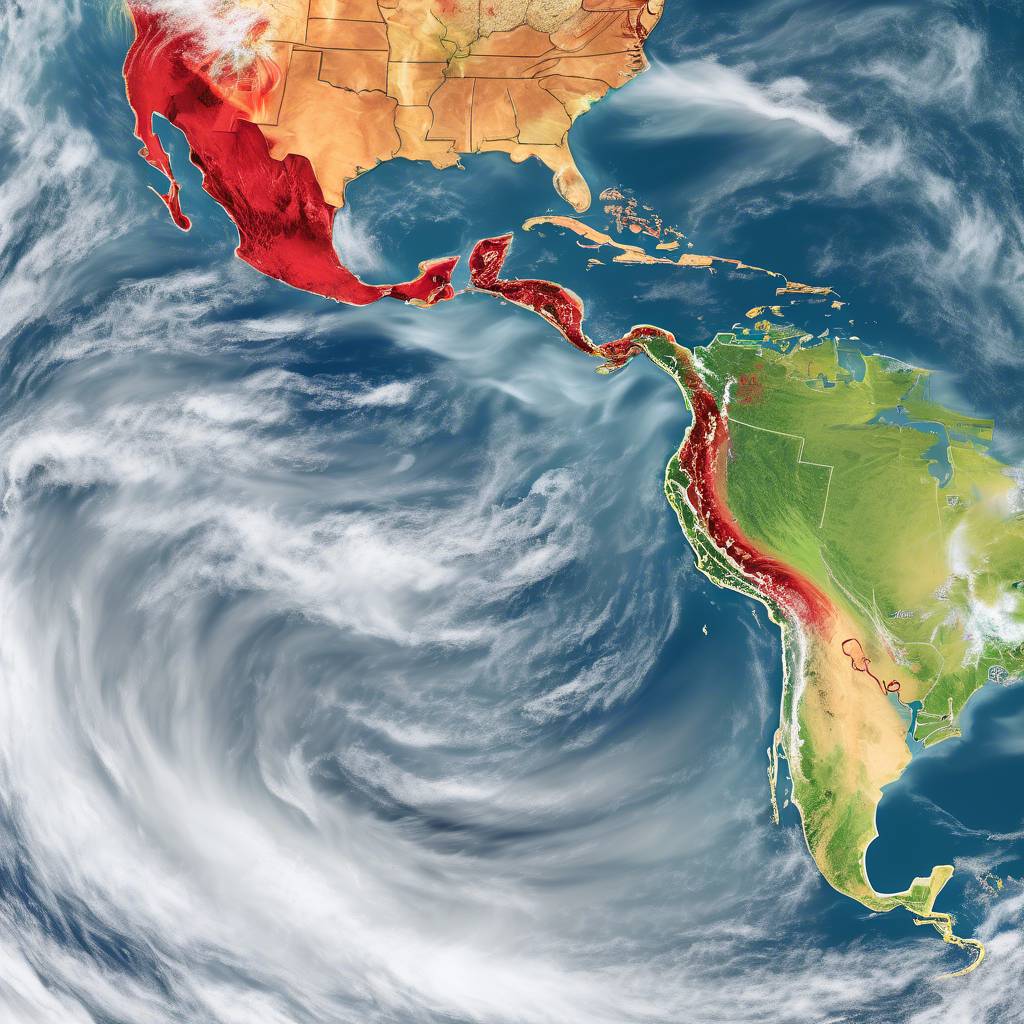Colorado State University is forecasting a busy 2024 hurricane season with around 23 named storms expected to form in the Atlantic basin, nearly half of which could become hurricanes. Dr. Phil Klotzbach, a senior research scientist at CSU, expressed confidence in this year’s outlook due to the state of the atmosphere and other favorable signals. The team highlighted states and regions with above or below average chances of experiencing a cyclone passing through, with the odds of a major hurricane making landfall along the US coastline at 62% and the Caribbean at 66%.
The report also mentioned that it is nearly guaranteed that at least one cyclone will pass within 50 miles of Florida during the season, with states in New England having the lowest probability. Across all coastal states, chances are 10-20% higher than average, with Alabama seeing the highest increase. Landfall probabilities are linked to the expected Accumulated Cyclone Energy (ACE) index, which is calculated based on a cyclone’s maximum sustained six-hour wind speed and longevity.
For the 2024 season, researchers expect the Atlantic Ocean, Gulf of Mexico, and Caribbean to produce an ACE value of 210, 170% higher than an average season. Nearly 60% of the total ACE is expected to occur west of 60°W longitude, impacting the majority of people affected by tropical storms and hurricanes in the basin. Changes in ocean patterns due to phenomena like El Niño and La Niña can also influence the storm patterns, affecting the track of storms and potential impacts on different regions.
Although a reduced or heightened probability does not guarantee or preclude an area from a direct strike, past data shows that probabilities can be indicative of potential storm impacts. In 2023, the Florida Panhandle had a relatively low probability of being impacted by a major storm, yet it was the only region of the country that experienced a significant cyclone. It is important for residents in hurricane-prone areas to be prepared and have plans in place to protect their homes during the hurricane season, as these natural disasters can have severe and unpredictable impacts on communities.
In conclusion, the 2024 hurricane season is predicted to be active, with an above-average number of named storms expected in the Atlantic basin. Researchers at Colorado State University emphasize the importance of understanding the probabilities and potential impacts of cyclones passing through different regions, as well as the link between ACE values and the strength and longevity of tropical cyclones. Factors such as El Niño and La Niña can also influence storm patterns, affecting the likelihood of hurricanes making landfall in specific areas. It is crucial for individuals in hurricane-prone areas to remain vigilant and prepared for potential storms during the upcoming hurricane season.









